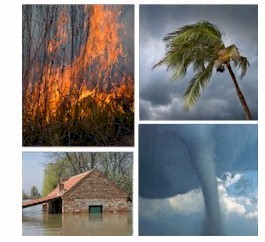|
|
DSC Tech Library
 This section of our technical library presents information and documentation relating to Emergency Broadcasting Systems and Disaster Recovery Applications.
Should an emergency arise in your community, our 911 broadcast service can deliver large volumes of calls quickly using thousands of phone lines simultaneously. In the event of a blizzard, wild fire or devastating flood, your community can be notified quickly given specific instructions if an evacuation is required using our emergency response system. If a dangerous chemical spill occurs in your community, you can target specific areas to call. If a severe snow storm hits your area, your community can be notified of school closings or event cancellations.
This section of our technical library presents information and documentation relating to Emergency Broadcasting Systems and Disaster Recovery Applications.
Should an emergency arise in your community, our 911 broadcast service can deliver large volumes of calls quickly using thousands of phone lines simultaneously. In the event of a blizzard, wild fire or devastating flood, your community can be notified quickly given specific instructions if an evacuation is required using our emergency response system. If a dangerous chemical spill occurs in your community, you can target specific areas to call. If a severe snow storm hits your area, your community can be notified of school closings or event cancellations.
The following article relates to emergency broadcasting and how it is used in various communities today. This information was obtained from the internet with attribution to the author and/or community.
Industries Launch Warning System
Move follows BP Canada explosion and fire near Fort Saskatchewan two years ago
The Edmonton Journal
by Duncan Thorne
FORT SASKATCHEWAN - Industries northeast of Edmonton banded together to launch a high-tech warning system Thursday that is the first of its kind in Canada.
The move follows criticism that BP Canada delayed telling neighbours about an explosion and fire in 2001, for nearly 10 hours, at its plant near Fort Saskatchewan.
"It's really cool because now we can meet public expectations," Randy Jones, BP's operations-centre manager, said after the launch. "We can fulfil the role of being the information provider that is really critical in this situation."
THE INDUSTRIES INVOLVED SAY THE SYSTEM, WHICH RELIES ON TECHNOLOGY FROM TELUS, IS UNIQUE ON TWO COUNTS:
- It uses the Web to gather geographic information so an automated call-out system can warn the people who are at risk in an emergency.
- It includes another automated phone line -- 1-866-653-9959 -- people can call for information on industrial accidents or unexpected activities that worry them.
But there were tense moments at a demonstration of the call-out system for municipal officials from across the region north and northeast of Edmonton.
Organizers from Telus set up the system to dial the officials' cellphones, then told a computer to call them. They promised it would connect within a minute -- a minute that felt nerve-rackingly long before there was a chorus of phone rings from around the hall.
"A minute's a long time when you're sitting and waiting for something," Grant Berry of Telus Geomatics said afterwards. "We were nervous because of the crowd here, but we're very confident in our technology."
The system relies on Web-based GIS -- geographical information systems -- to zoom in on a map of a problem area. An operator can then circle all houses and businesses within a specified range of the problem, and have the computer dial all phones within the circle.
The system can call at least 1,500 homes in an hour. The area covered by the Northeast Region Community Awareness and Emergency Response system has about 10,000 phones, connecting to about 40,000 people.
The area wraps around Edmonton from Morinville to the northwest, Lamont to the northeast and southwards beyond Sherwood Park. Fort Saskatchewan, with the largest concentration of industrial plants, has about 14,000 people.
The criticism of BP over its fire was that it delayed activating its existing local warning system. There are strict protocols about when to use the new system.
BP's Jones said his plant would promptly issue a warning in the event of an - unlikely - repeat of the 2001 fire.
"We didn't have a real understanding of what the public wanted," he said. "Companies had their pre-planned responses to things and the public had (different) expectations."
BP paid the $140,000 start-up cost for the system. The industrial users will share the $80,000-a-year operating cost.
Fort Saskatchewan Mayor Ken Hodgins said his city will consider joining so it can make information available about road closures, for instance, or to send out warnings about disasters.
Fort Saskatchewan resident Orest Holowach said the warning system is a secondary issue. "To me, it's to make the public feel good."
Holowach was once in charge of a plant that had a fatal explosion in the mid-1970s. He wasn't on duty at the time. Instead it happened when a close friend took his shift -- and died.
He said provincial regulators approved a shut-off system that failed to prevent the disaster, similar to what happened at BP.
Bill Procyk, a retired farmer with land near BP, questioned whether the plants will call people even with the new system. He said he's had repeated experiences of companies failing to issue warnings.
"They're afraid of liability," he said.
But Municipal Affairs Minister Guy Boutilier was impressed with Thursday's demonstration. "It's not often that you can say it's the first of its kind in Canada."
|


 This section of our technical library presents information and documentation relating to
This section of our technical library presents information and documentation relating to